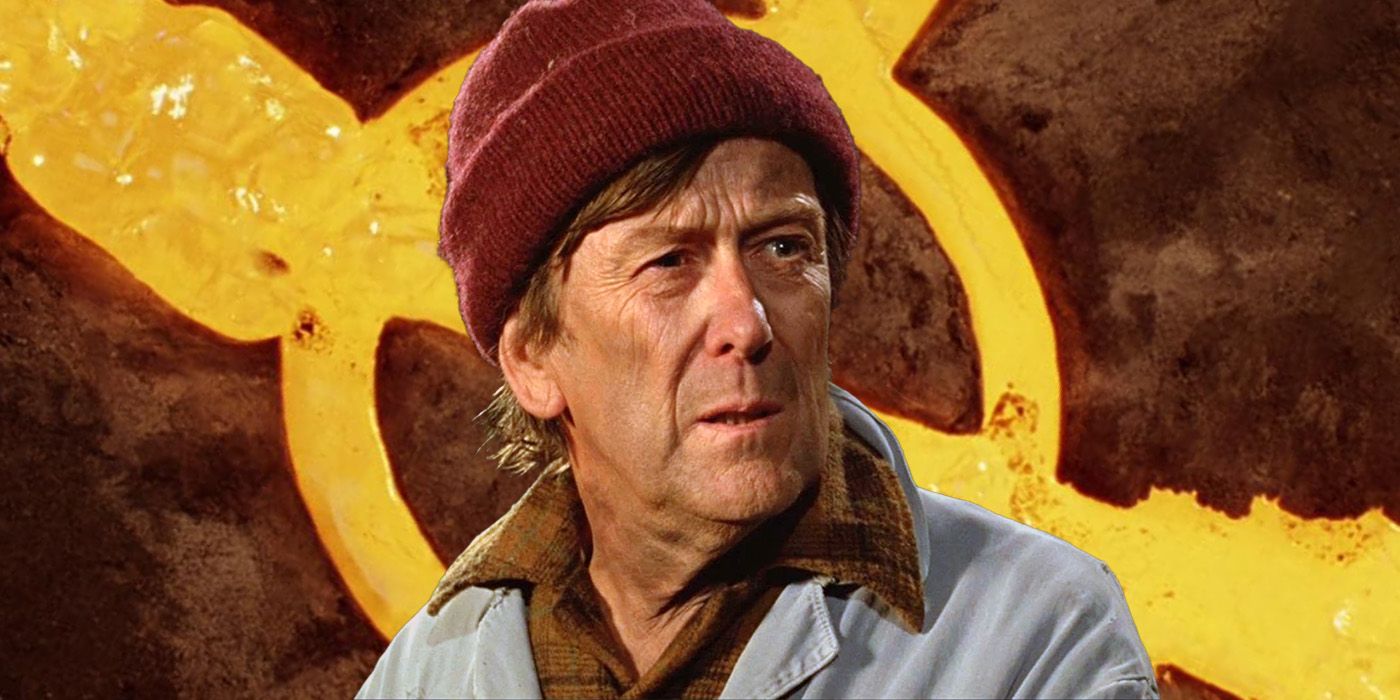


Using the immeasurable fear and desperation of the Bubonic Plague, Vincent Ward‘s The Navigator: A Medieval Odyssey delivers a different approach to the age-old tradition of time bending in science-fiction and fantasy films. Creatively ambitious and rife with religious and societal undertones, The Navigator intricately utilizes visions and dreams to warn its characters of an impending doom, toying with audiences expectations of what is real and what is not. The result is a smorgasbord of filmic images that bends the conventions of time and space, and is arguably essential viewing for those interested in time-travel and all of its immense possibilities.
Men seeking relief from the Black Death, guided by a boy’s vision, dig a tunnel from 14th century England to 20th century New Zealand.
The Navigator: A Medieval Odyssey tells the story of a ragtag group of Cumbrian villagers in mid-14th century England, who are desperately trying to escape the onslaught of The Black Death. With nowhere to turn to, the villagers rely on the visions of Griffin (Hamish McFarlane), a boy who is gifted with a “second sight”. According to the images in his head, they are to undergo a mission to put a copper cross atop a cathedral on the far side of the world. With the blessing of a returning Connor (Bruce Lyons), one of the village leaders, they embark on a journey towards a deep cavern. With immense courage and some fine copper ore in their packs, they successfully blow through the rocks and end up in modern day New Zealand. It appears that the cave that they have gone through is not merely a way to a far distant land, but a portal that distorts the fabric of the space-time continuum.
Connor’s and Griffin’s groups are split up by circumstances resulting from their awe and confusion of this strange world. Griffin and his companions walk their way into a foreclosed foundry, where they convince the workers to cast their copper ore into a cross, while Connor ends up missing, chasing a runaway member of his. After a series of comical mishaps because of their failure to understand the technologies of the present world, they eventually converge on the cathedral, and Griffin successfully places the cross atop the church tower. Suddenly, spectators are surprised with a twist: it was all a vision of Griffin, and they were still in the middle of the tunnel struggling to push through. When someone from the other end announces that the plague has managed to avoid them, they go back up, only to be revealed that Griffin has been infected by the plague.
Time travel is a staple in the science-fiction genre, specifically because it opens new dimensions for storytelling, crafting narratives that wouldn’t be possible in the “natural” way we perceive them. Fraser Sherman in Now and Then We Time Travel: Visiting Pasts and Futures in Film and Television notes that there are certain conventions regarding its usage in fiction. Often, films on time travel traverse the space-time continuum in a straightforward fashion. Characters go back in time and try to fix things as a last ditch effort to avert a great crisis. They may be hinged on the notions of causality (changing or maintaining outcomes à la Back to the Future), logic (contradictions and paradoxes, much like in Men in Black 3), and/or morality (bending history for the greater good, such as in Terminator 2: Judgment Day).

Related
The ‘Megalopolis’ and ‘Godfather’ director transcends space and time.
What makes The Navigator: A Medieval Odyssey stand out from these conventions is that it manages to blend all three of these ideas, while also injecting something new: the time travel doesn’t exactly occur in the physical realm. Rather, it manifests in the vision of its main character, stylistically separated by its creative use of color. The present time – or in the case of the film, the medieval time – is in black and white, while the visions which refer to the future are in full living color. This is more than just an aesthetic choice, as the most important sequence of the picture – the moment where the audience realizes it is all a vision – is a striking display. As Griffin has managed to reach the top of the tower, signaling the success of their mission, the images revert to monochromatic black and white, with all of them sitting ducks in the middle of the cave.
This immediate return to the absence of color is gut-wrenching to its spectators, evocative of its cruel intentions. It’s a reflexive recursion of massive proportions, which can be interpretive of Ward’s message that all of this is just, as time-travel is in real life, merely a fantasy. They may have traveled through space and time, but the truth of the matter is that The Black Death is coming, and there’s no way of stopping it. It has successfully subverted the viewers’ expectations and genre tropes by completely disregarding anything about the possibility of time travel. In a way, the film uses time-travel to deny the existence of such. Interestingly, the only thing that came true of Griffin’s visions is that he is the one who would die. After all, in the film’s denouement, he saw himself falling from the tall ivory tower hammering home the futility of this fantastical endeavor.
One of the more intricate things about The Navigator: A Medieval Odyssey is about its social and religious questioning of the medieval ages. Ward himself notes that the idea of the film came from a conversation he overheard on trip to Ecuador. According to the filmmaker himself, a man was describing a dream he had where a city was made up of iron and glass, glimmered and shined across the cosmos. Ward then imagined if an impoverished young man were to experience this vision, would he have had the same thoughts? This manifests into the very nature of the characters themselves. The Cumbrian villagers are impoverished, desperately trying to escape something that would wipe out their entire populace. At a time like this, they can only rely on their faith to grant them salvation. The journey they embark on is reminiscent of a pilgrimage, a long arduous trip to the holy land that has their answers – the final destination being a cathedral, an on-the-nose reminder of such. The blending of these two factors brings viewers right into their terrible predicament. One can quickly imagine the fear and paranoia enveloping those in the medieval ages in the face of such a deadly disease, and the desperation for salvation.
In essence, Vincent Ward’s time-bending feature is a cinematic achievement that bends the idea of time-traveling to a completely different level. While it may not be as exciting as other sci-fi or fantasy stories – The Navigator: A Medieval Odyssey possesses a molasses-like pace at times – it successfully bridges the fantastic world of science-fiction and the harrowing indifference of reality.
The Navigator: A Medieval Odyssey is currently available to stream on Arrow Player in the U.S.